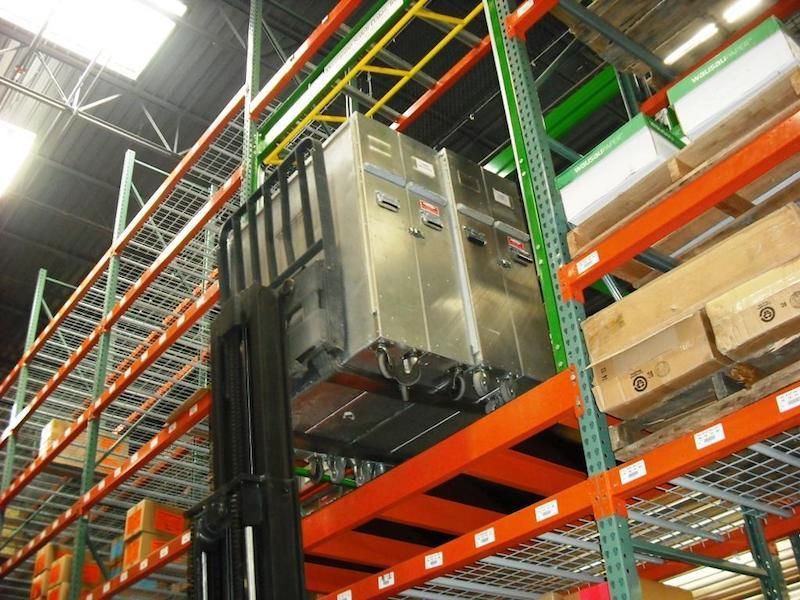
National Forklift Safety Day
National Forklift Safety Day looks at an important issue - safety in operations using forklift trucks - which has always been paramount in material handling and manufacturing facilities. Systems are growing more complex, and the safety and guarding solutions are more innovative than ever before. Yes, there are fewer workers driving forklift trucks due to increased automation in industrial facilities, but employees continue to work in the facility on elevated and their safety must still be one of the top priorities. The potential for serious injury still exists, especially with unmanned forklifts, and the ramifications for not creating a secure environment are severe; the potential loss of income, the facility being forced to shut down, or reputation of being an unsafe workplace are too serious of an issue. Proactive safety is a must.
Protect Employees
Inside the facility, any elevated structure must be properly guarded. OSHA and ANSI standards mandate that a barrier be in place at all times during the operation, even while pallets are being loaded, staged or worked on. This includes any elevated platforms or mezzanines in which any forklifts used to move material to and from a pallet drop area. Guardrail to secure the perimeter is often designed into the structure, but the pallet drop areas within the structure are a major hazard and must be properly secured.
A dual-gate system should be installed to ensure a barrier in the pallet drop area is in place at all times – even while the pallet is being loaded or unloaded by the forklift. Dual gate systems can be configured in many different designs; each has a gate at the ledge that is connected to a second gate behind the pallet and configured so when one gate is open the opposite gate is closed. Fixed stanchions on the side create a controlled-access area. These systems can be powered for remote access by the forklift truck operator or unmanned vehicles.
A properly designed pallet drop safety gate will not depend on the operator to ensure the barrier is in place at times and will ensure code compliance, and can be designed to fit your specific space limitations and workflow. And don’t forget, even if you are using automated forklift trucks to load these areas, employees are often still on the upper levels, moving or picking the pallets, and the areas should be guarded with a dual-gate system.
The original dual-gate system, the Roly® Safety Gate, is often the best choice for fall protection in most applications, as the gates never extend into the forklift or picking aisle, and if in a pick module, does not interfere with the forklift truck loading the upper levels. The gates open and close within the confines of the pallet drop area so the gate at the ledge opens and closes flush with the ledge and the rear gate is flush with the rear uprights of the system. Tri-Side safety gate models are also popular for areas loaded by a forklift truck with limited depth. This design uses a cantilevered rear-side gate that lifts up and out of the way to allow access around the pallet in tight environments while always keeping the ledge secured.
Protect Structures
Safety gates must be rugged to withstand the potential impact that a forklift truck can have on them while loading or unloading palletized material. Every one of our safety gate models is constructed from square tubular steel - either powder-coated mild or electro-polished stainless. The rugged steel construction ensures that the safety gate can be used in any environment and can hold up through daily use even when encountering the a forklift truck. Additionally, we provide impact plates on posts to minimize the damage the impact of a lift truck while it’s loading or unloading pallets to that area.
Remember that these safety precautions in forklift truck operations should be practiced every day, not just on the designated day in June. If you have questions on how to secure pallet drop areas that use forklift trucks, contact us - we’re happy to help.